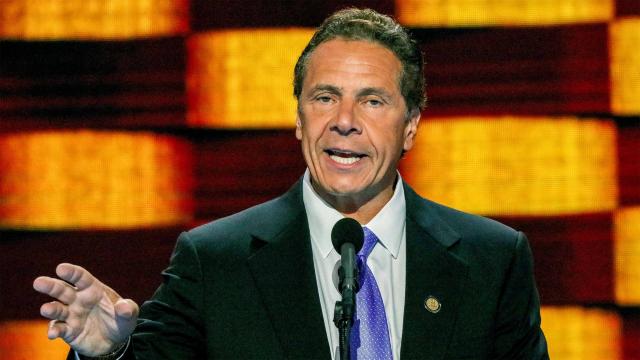
Gov. Andrew Cuomo of New York signed climate legislation into law. (Source: Shutterstock)
New York on July 18 awarded two major offshore wind contracts to Norway’s Equinor and a joint venture between Denmark’s Orsted and U.S. utility Eversource, procuring more of the renewable power than it had planned as part of Gov. Andrew Cuomo’s ambitious plan to slash greenhouse gas emissions.
Cuomo made the announcement at a New York City news conference just before signing into law a landmark climate bill to reduce the state’s greenhouse gas emissions to zero by 2050. The law mandates reducing emissions by 85% from 1990 levels by 2050, and offsetting the remaining 15%, making the state carbon-neutral.
Offshore wind is expected to play a key role in reducing the state’s emissions, and the state has a goal of procuring 9,000 megawatts (MW) by 2035. The two contracts unveiled add up to 1,700 MW of capacity, or enough to power 1 million homes, Cuomo said. The state’s first procurement had originally planned to be between 800 and 1,200 MW.
Instead, it awarded an 880-MW contract to Orsted and Eversource for the Sunrise Wind project off the eastern coast of Long Island and another 816-MW contract to Equinor for its Empire Wind farm that will supply New York City.
The projects will be completed by 2024, Cuomo said, also pledging $287 million in state funds to build facilities to support the industry.
“These projects will help make New York the hub for this growing, exciting, necessary future industry,” Cuomo said, adding that they will generate $3.2 billion in economic activity and create 1,600 jobs.
Four major developers had submitted proposals to the state, including a joint venture between EDF and Shell and another between Avangrid Inc and Copenhagen Infrastructure Partners.
The New York contract marks another recent win for Orsted, which last month was awarded a 1,100-MW contract by the state of New Jersey for a project off the coast of Atlantic City.
The selection of Orsted and Equinor continues the trend of European companies dominating the nascent U.S. offshore wind sector.
The cost of generating electricity from offshore wind farms has dropped dramatically in recent years but is far more costly than power from wind facilities onshore. The United States currently has just one small offshore wind farm off the coast of Rhode Island that is also owned by Orsted, but larger projects are being developed both there and elsewhere in the Northeast.
Recommended Reading
Dividends Declared Week of Nov. 4
2024-11-08 - Here is a compilation of dividends declared from select upstream and midstream companies in the week of Nov. 4.
TC Energy Appoints Two Independent Directors to Board
2024-11-07 - TC Energy Corp. appointed Independent Directors Scott Bonham and Dawn Madahbee Leach to its board, the company announced Nov. 7 in a press release.
OMS Energy Files for IPO, Reports Revenue Growth
2024-11-06 - Singapore-based OMS Energy, a wellhead system manufacturer, has not yet determined its price range and number of shares.
Record NGL Volumes Earn Targa $1.07B in Profits in 3Q
2024-11-06 - Targa Resources reported record NGL transportation and fractionation volumes in the Permian Basin, where associated natural gas production continues to rise.
Twenty Years Ago, Range Jumpstarted the Marcellus Boom
2024-11-06 - Range Resources launched the Appalachia shale rush, and rising domestic power and LNG demand can trigger it to boom again.





